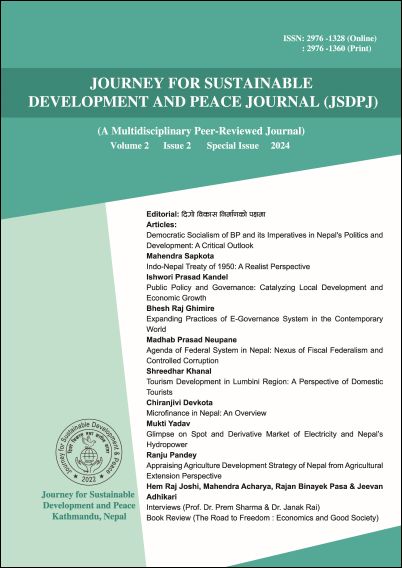Tourism Development in Lumbini Region: A Perspective of Domestic Tourists
DOI:
https://doi.org/10.3126/jsdpj.v2i2.69572Keywords:
Tourism, pilgrimage, domestic tourism, Buddhism, LumbiniAbstract
Globally, domestic tourism has been emerging as an alternative to international tourism both in the normal and the hard times. This also has momentum in Nepal, where the Lumbini region is considered one of the ever-visited destinations among Nepali tourists. The paper is a typical case study of Lumbini Sanskritik Municipality, the birthplace of God Buddha. This paper assesses how domestic tourists perceive tourism development in Lumbini, why they visit the site, what potentials and challenges they feel, and from which region of Nepal they belong and why. Following a quantitative dominant mixed method approach, the researcher has employed a structured questionnaire survey tool among 174 domestic tourists. Besides, semi-structured interviews among the five key informants were also taken. The paper argues that the travel and tourism of visitors from different regions of Nepal increased in recent years despite the fact that the region is known as a worldwide hub of international tourism. Domestic tourists are also attracted to Lumbini for various reasons, but the religious attachment is the fundamental one where respect for Buddha and Buddhism as a national pride is manifested. Despite having different opportunities and explorations the study also reveals some hurdles and challenges in terms of policy intervention and infrastructure development for the proportion of domestic tourism in Lumbini.
Downloads
Downloads
Published
How to Cite
Issue
Section
License
This license enables reusers to distribute, remix, adapt, and build upon the material in any medium or format for noncommercial purposes only, and only so long as attribution is given to the creator.




